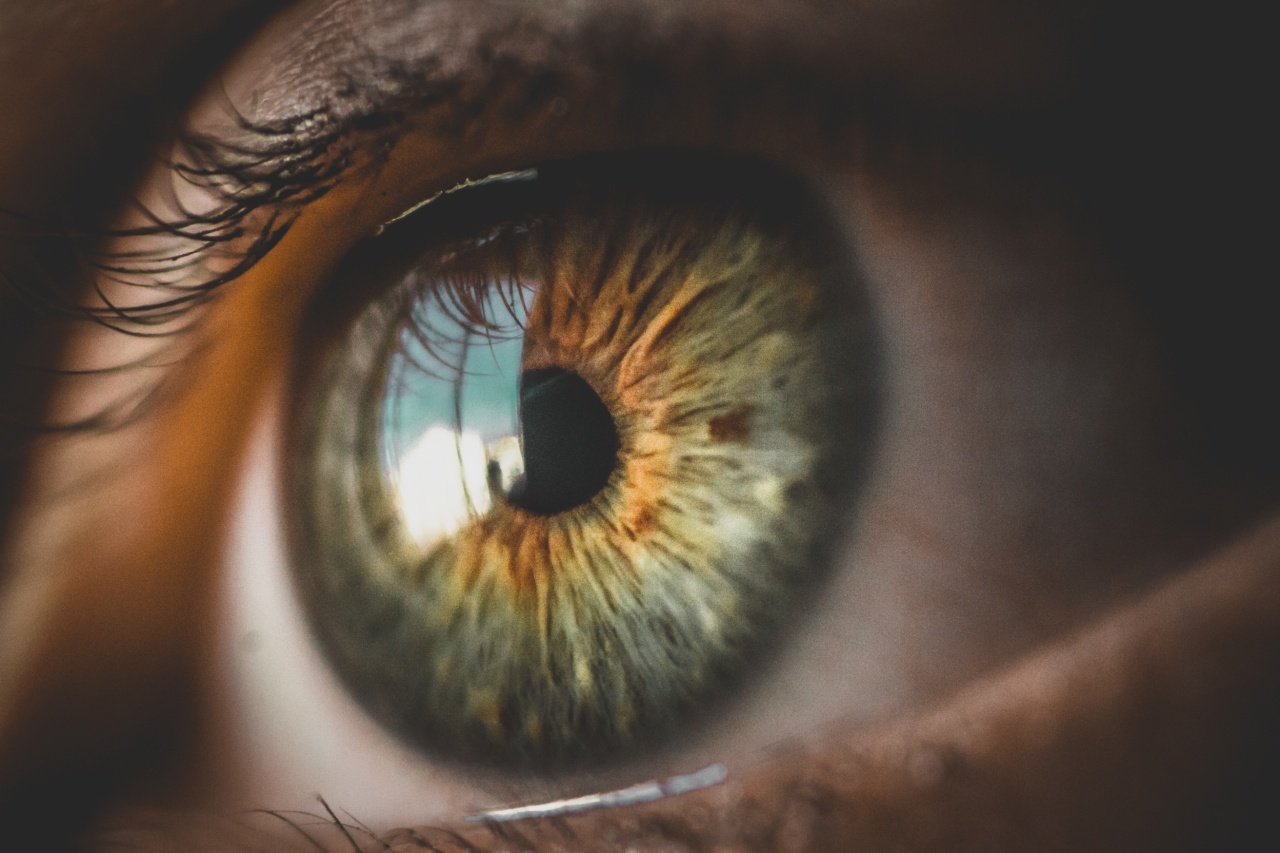Eyes are one of the most crucial organs of the human body, allowing us to see and experience the world around us. However, many individuals are affected by various eye diseases that can significantly impact their vision and overall quality of life.
These eye diseases can range from common conditions like refractive errors to more severe ailments such as glaucoma or macular degeneration.
The Impact of Refractive Errors
Refractive errors are one of the most prevalent eye conditions around the world. They occur when the shape of the eye prevents light from focusing directly on the retina, resulting in blurred vision. The three main types of refractive errors are:.
- Myopia or nearsightedness: Individuals with myopia can see close objects clearly, but distant objects appear blurry.
- Hyperopia or farsightedness: People with hyperopia can see distant objects more clearly but may have difficulty with close-up tasks like reading or using a computer.
- Astigmatism: Astigmatism causes blurry or distorted vision at both near and far distances due to an irregularly shaped cornea.
Refractive errors can be corrected with prescription glasses, contact lenses, or refractive surgery, such as LASIK. By addressing these conditions, individuals can significantly improve their visual acuity and experience a better quality of life.
Glaucoma and its Effects
Glaucoma is a progressive eye disease that damages the optic nerve, responsible for transmitting visual information from the retina to the brain. It is often associated with increased intraocular pressure.
Glaucoma can lead to vision loss, and if left untreated, it may eventually cause total blindness.
While glaucoma can affect individuals of all ages, it is more prevalent in older adults. Most individuals affected by glaucoma do not experience any symptoms until the disease has progressed significantly.
Regular eye exams and early detection are crucial in managing glaucoma and preventing irreversible vision loss.
Treatment for glaucoma typically involves the use of prescription eye drops, oral medications, laser therapy, or surgery.
These interventions help to control intraocular pressure and slow down the progression of the disease, preserving the patient’s vision to the best extent possible.
Macular Degeneration: A Leading Cause of Vision Loss
Macular degeneration is a common eye disease that affects the macula, the central part of the retina responsible for the sharp, central vision needed for tasks like reading and driving.
It is one of the leading causes of severe vision loss in individuals aged 50 and above.
There are two main types of macular degeneration:.
- Dry macular degeneration: The more common type, characterized by the gradual breakdown of the macula’s light-sensitive cells.
- Wet macular degeneration: A more aggressive form of the disease, caused by the abnormal growth of blood vessels beneath the macula that leak and damage the surrounding tissue.
Although there is no cure for macular degeneration, early detection and treatment can help slow down the progression of the disease and preserve vision. Treatments may involve injections into the eye, laser therapy, or certain oral medications.
Diabetic Retinopathy and its Effects
Diabetic retinopathy is an eye disease that affects individuals with diabetes. High blood sugar levels cause damage to the blood vessels in the retina, leading to blurred vision and potential vision loss. It is a leading cause of blindness among adults.
There are four stages of diabetic retinopathy:.
- Mild nonproliferative retinopathy: Microaneurysms occur in the retina’s tiny blood vessels.
- Moderate nonproliferative retinopathy: The blood vessels that nourish the retina become blocked.
- Severe nonproliferative retinopathy: Numerous blood vessels get blocked, resulting in a lack of blood supply to the retina.
- Proliferative diabetic retinopathy: New blood vessels start growing on the surface of the retina, which can lead to retinal detachment.
Strict control of blood sugar levels, regular eye examinations, and early intervention are crucial to managing diabetic retinopathy. Treatment options include laser surgery, injections, and vitrectomy.
Cataracts: Clouding of the Eye Lens
Cataracts occur when the normally clear lens of the eye becomes cloudy, resulting in blurred vision and visual impairment. They are a common condition associated with aging and are one of the leading causes of vision loss worldwide.
Common symptoms of cataracts include:.
- Cloudy, blurry, or dim vision
- Difficulty seeing at night or in dim lighting
- Increased sensitivity to glare
- Fading or yellowing of colors
- Frequent changes in eyeglass or contact lens prescription
To address cataracts, surgical intervention is typically required to remove the cloudy lens and replace it with an artificial lens called an intraocular lens (IOL).
Cataract surgery is safe and has a high success rate, effectively restoring vision and improving quality of life.
Retinal Detachment and its Consequences
Retinal detachment occurs when the retina, a thin layer of tissue at the back of the eye, pulls away from its normal position. This separation can cause vision loss and is considered a medical emergency.
If not promptly treated, retinal detachment can lead to permanent vision loss.
Common signs and symptoms of retinal detachment include:.
- Sudden appearance of floaters – small dark specks or strands that float across your field of vision
- Flashes of light in one or both eyes
- Blurred vision
- A shadow or curtain over a portion of your visual field
- Seeing a gray curtain moving across your field of vision
Treatment for retinal detachment usually involves surgical procedures, such as pneumatic retinopexy, scleral buckle, or vitrectomy. Timely intervention is essential to prevent permanent vision loss and preserve the health of the retina.
How to Protect Your Eyes from Disease
While some eye diseases are non-preventable, certain measures can be taken to protect and maintain good eye health:.
- Regular eye exams: Schedule comprehensive eye exams with an optometrist or ophthalmologist to detect any potential eye diseases early.
- Healthy lifestyle choices: Maintain a nutritious diet rich in fruits, vegetables, and omega-3 fatty acids. Avoid smoking and excessive alcohol consumption, as they can increase the risk of eye diseases.
- Eye protection: Use appropriate eye protection during activities that pose a risk to your eyes, such as wearing safety glasses when working with chemicals or using protective goggles during sports.
- Proper use of digital devices: Limit screen time and practice the 20-20-20 rule – every 20 minutes, look at something 20 feet away for 20 seconds to reduce eye strain.
- UV protection: Wear sunglasses that offer UV protection to shield your eyes from harmful ultraviolet rays.
Conclusion
Understanding the effects of various eye diseases can be crucial in early detection, management, and preservation of vision.
Regular eye examinations, adopting healthy lifestyle habits, and seeking prompt treatment when necessary are all essential components of maintaining optimal eye health. By taking proactive measures, individuals can minimize the impact of eye diseases and continue to enjoy a clear, vibrant world.




























